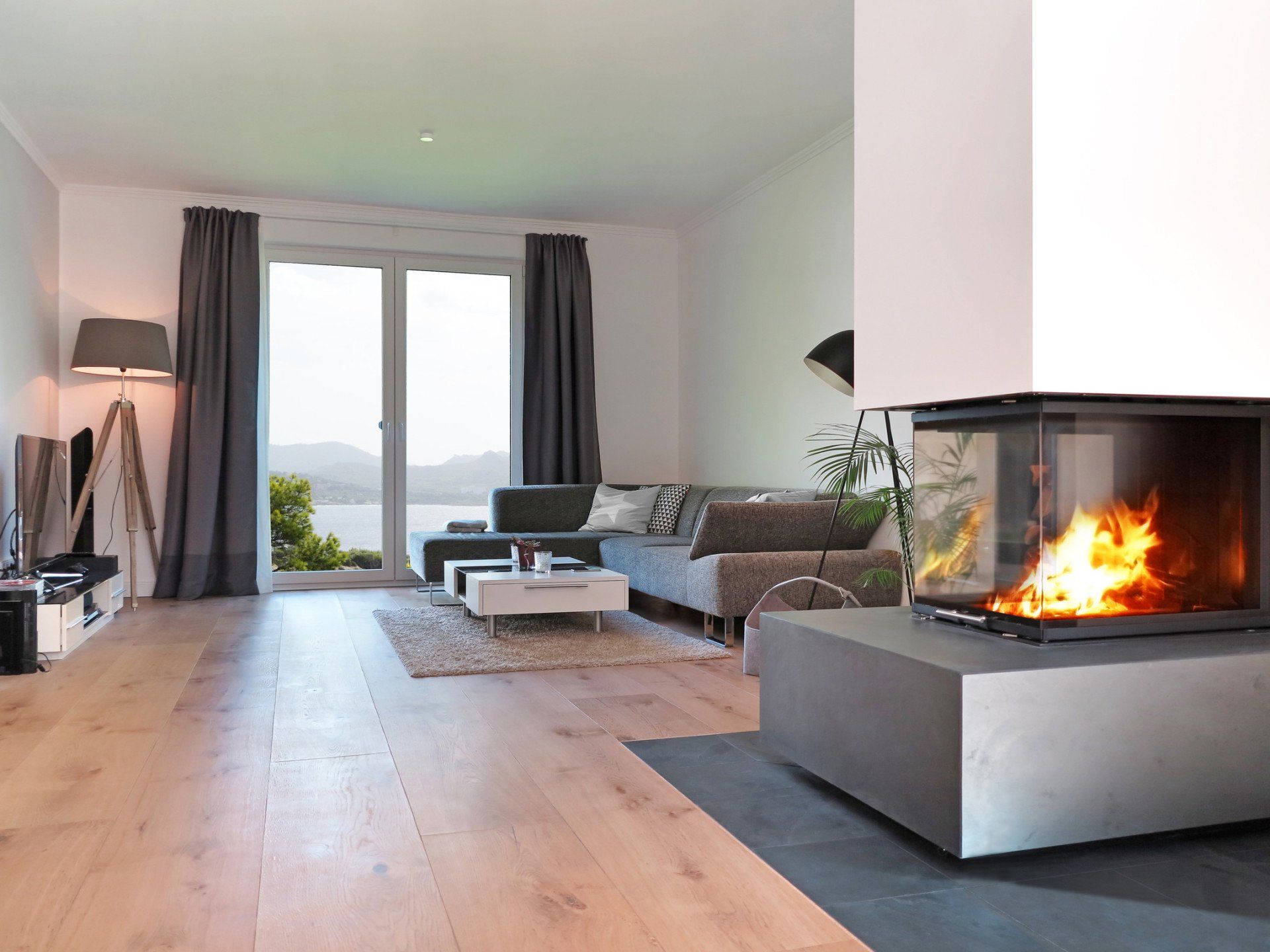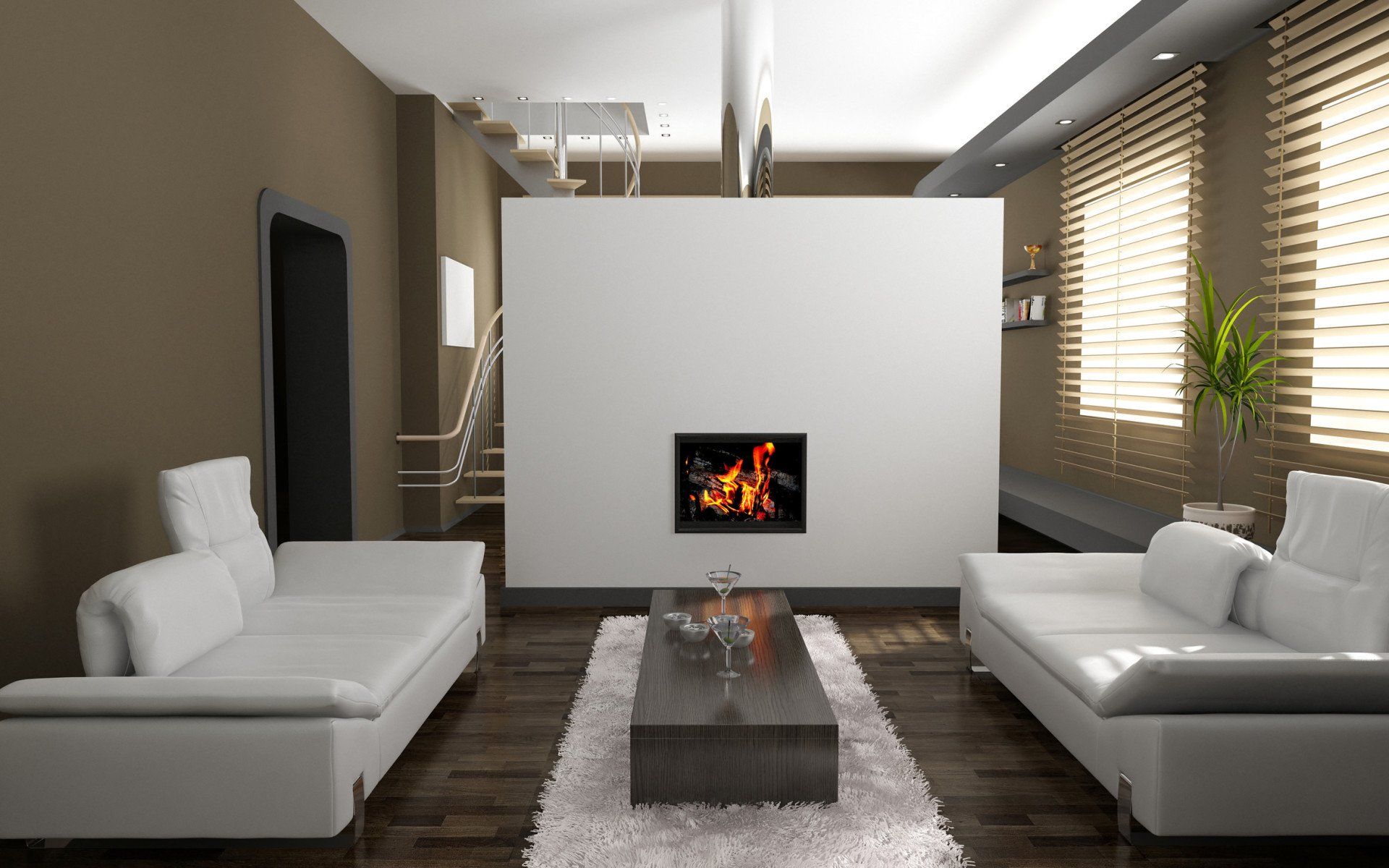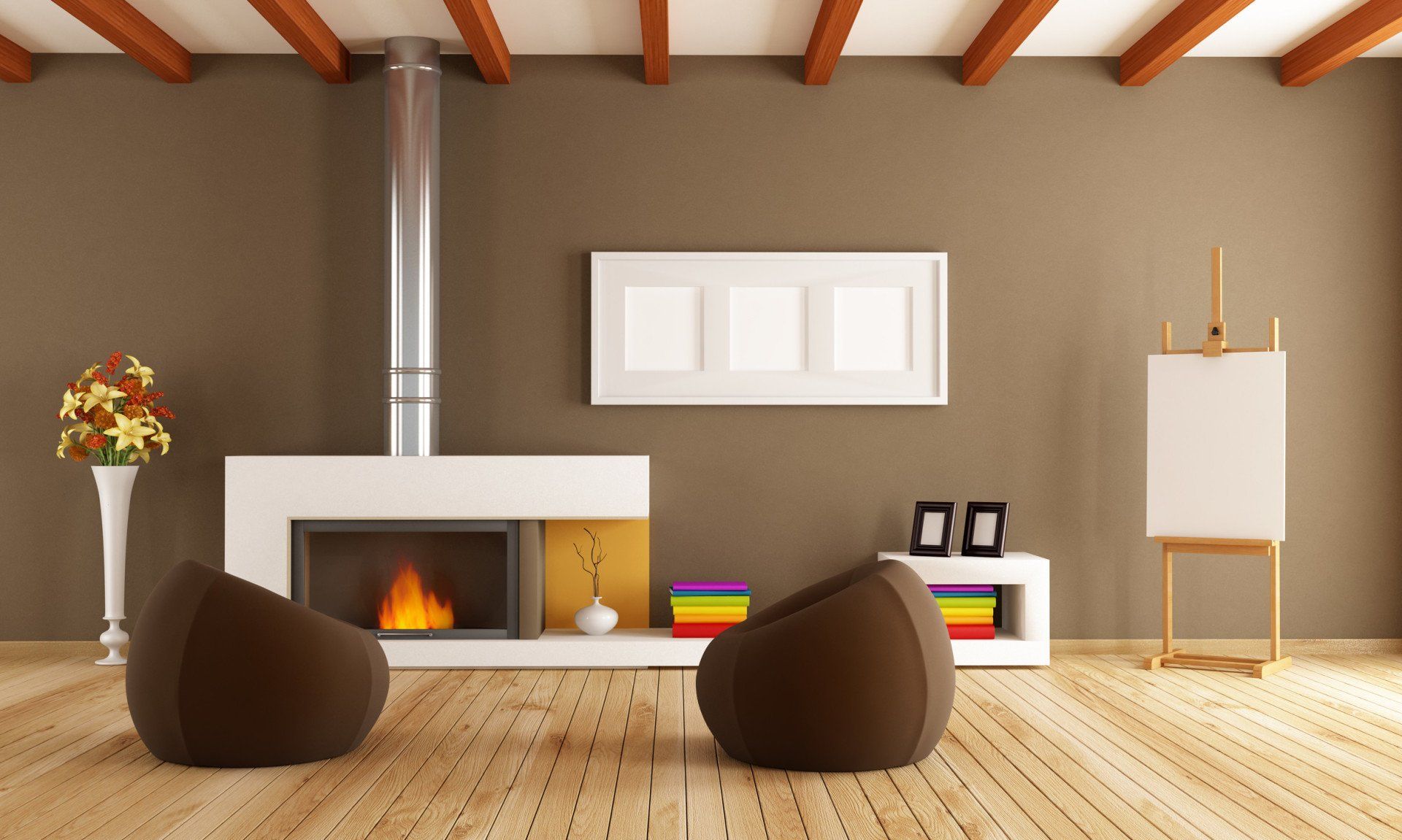HOW IT WORKS
Five things that (maybe)
you did not know about hydro stoves.
Let's take a closer look at the
wood hydro stoves.
The "hydro stoves" are those heat generators that are connected with the existing hydraulic system and they heat the water for radiators instead of producing hot air.
Here below you can find five curiosities that you did not know about this very interesting product.
Contact with us
1. Hydro stoves are "cooler" on the outside compared to other stoves.This is because they are designed to exchange as much heat aspossible with the system water, instead of with the room.
The power of the hydrocalor stoves is indicated by two values.The first value indicates the total product power and the second one indicatesthe power transferred to the water. Usually the difference between the two is 2-3 kWand indicates the heat that the stove transfers naturally to the room in which it is installed.You will notice that tt is not a very high value!
2. If the living room in which you will install the hydrocalor stove is small, it is best not to fit a radiator.In the event of a small installation area, possibly even well insulated, the 2-3 kW of heat that the stove transfers naturally to the room are already enough. The radiator may be excessive!
3. The more powerful hydro stoves can heat and produce domestichot water, but in this case it is always best to combine them with a puffer.The water stoves over 20-22 kW can be combined with a special kit for producing instantaneousdomestic hot water (DHW kit). The disadvantages are that the water comes out of the tap already hot only if the stove is switched on and running at full power. While if it is switched off or running at minimum power,it could take several minutes for it to heat up. The water flow rate is not very high either; this is whyit is always recommended to combine it with a puffer.
4. When a hydrocalor stove works in combination with an existing system, a plate heat exchangeris required. The hydrocalor stove can work as a single home heat generator or in combination with theexisting gas, methane gas or LPG system. In this case, to make the two systems “dialogue” with each other,an instrument called “plate heat exchanger” is required for the exchange of heat between the different systems.
5. The hydrocalor stove must never be connected directly to the radiator.It is absolutely not recommended to connect a hydro stove in place of a radiator, reusing the pipesthat connected it to the system. This is because in 99% of cases the diameter of the pipes is too smallfor the water to circulate sufficiently: the stove would end up only heating a part of the radiators or notreaching the desired temperature.
The hydrocalor stove must be connected to the hydraulic manifold, i.e. the “maze”of hydraulic pipes that is usually under the staircase or in the bathroom. Only this way thehot water that it produces is able to reach all the radiators of the system.
Catalog

What is Hydrocalor?
Hydrocalor: hot water for all radiators
Hydro stoves produce hot water that is used to feed the heating system (radiators or underfloor heating). The most powerful models, from 20 kW up, can also produce domestic hot water for all your home's needs.
In combination with hydro stoves, we sometimes recommend installing a puffer or storage system. In the event of heating only, it stores excess hot water produced by the stove and releases it into the radiators when necessary, with the cost-effective result of heating the house even with the stove is off. Puffers are highly recommended also in the case of domestic hot water production, as this means there is always a large amount of hot water available, instantaneously and whenever you want, even when the stove is switched off.
Hydrocalor is designed to provide maximum efficiency. In a few minutes it provides hot water for all the radiators or for underfloor heating systems.

Heating: a single stove
for the whole house!
Solutions to heat a whole house with just one stove!
To make the most of the heat produced by a stove, it would be great to be able to use it not only in the room where it is installed, but also in other areas of the house. This is the opportunity provided by “ducted” stoves and “hydro stoves”.
Switch to a renewable heating system
Would you like to replace your gas boiler with a more environmentally friendly solution? With a hydro stove its considered to meet the energy requirements of a small home with “green” solutions.
Hydro stoves produce hot water that is used to feed the heating system (radiators or underfloor heating). The most powerful models, from 20 kW up, can also produce domestic hot water for all your home's needs.
Contact
Guardamar del Segura, Alicante
+ 34 966 57 51 14
info@hydrocalor.es




